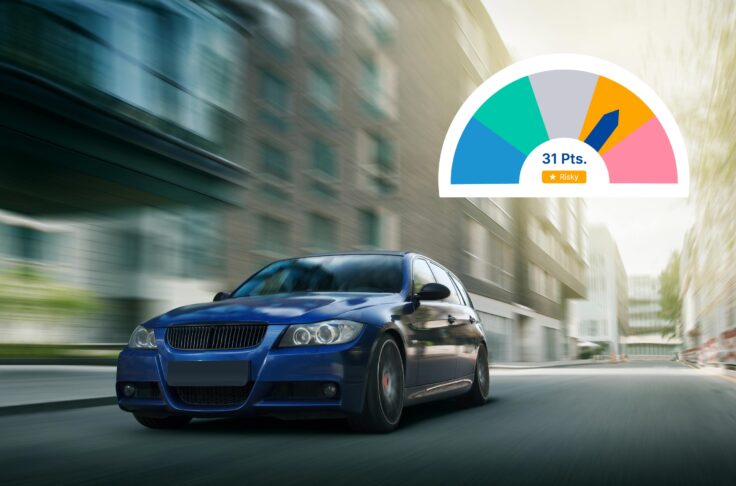Overcoming First Mile-Last Mile Challenges
Summary
Public transit plays a key role in the transportation ecosystem and shared mobility can help bring more people out of their private cars and into more public transit services. The first mile-last mile gap between people’s homes and the nearest transit station can be filled by shared mobility services, but we must first understand what are its challenges in order to properly address them.

There has been undeniable growth in the number of transportation options in urban cities, from ride-hailing to scooter sharing to microtransit. Having more ways to get around a city helps with decreasing the reliance on personal vehicles, but is it enough to reduce congestion and provide more efficient movement of people throughout cities? At the end of the day, public transit needs to play an integral part in how people choose to travel, and there is an opportunity for shared mobility to get more people onto public transit. For this to happen, we need to fill the first mile-last mile gap.
The first mile-last mile gap exists because public transit cannot serve every square foot in a city and due to urban sprawl, this would not be an economical use of public resources. On average, people are willing to walk about 400 metres to a bus stop and about 1 km to a rapid transit station. However, this radius does not reach the entire city and many times, transit stations are outside of the range people are willing to walk, so a convenient mode of transportation is needed.
Why is this important? Because filling the first mile-last mile gap has potential to bring up to nine times as many passengers to public transit. By simply getting people who are not just a half mile away but 1.5 miles away connected to the nearest station, reliable public transit becomes a viable transportation option for time-sensitive, busy people.
Challenges with First Mile-Last Mile Needs
There have been different approaches to address this gap, from tech-enabled solutions like MaaS and shared mobility, to public-private partnerships like mobility hubs, to policy-enabled solutions like incentives and public education. But before talking about solutions to the first mile-last mile gap, we need to understand the challenges that need to be overcome. To start, lack of infrastructure, such as no sidewalks or protected bike lanes to facilitate those modes to transit stations, are a cause to the first-last mile gap. Even then, not everyone would want to walk or bike to transit stations due to safety or other concerns, so other options are still needed.
The purpose of urban transportation is to move people, so we have to focus on how people behave. Unfortunately, once people are in a car, they prefer to just stay in the car for the entire trip. In other words, driving to a transit station is not seen as convenient unless there are strong pain points at the end of the trip, like expensive parking, for example.
Similarly, there is a general resistance to making transfers, whether that’s between the bus and subway or two bus routes. With transfers, there is a risk of the second part of the trip being disrupted, causing a delay in getting to the destination. Transfers may also add waiting time, which is time that could otherwise be used getting closer to the destination. Overall, convenience and reliability play a major factor in people’s preferences towards their transportation choices.
In addition, overcoming first mile-last mile challenges looks different depending on the current mode choice. Typically, existing transit users are open to finding more efficient ways to connect to transit. This is great, but it doesn’t increase the number of people using transit. The ideal situation for transit agencies is shifting car users from their vehicle use to public transit, but car users have been found to be resistant to having to make transfers.
Opportunities for Filling in the First Mile-Last Mile Gap
New technology is not always the answer for solving transportation options, but it can be a strong foundation for filling in the first mile-last mile gap. For example, Mobility-as-a-Service apps that aggregate multiple shared mobility providers under one app can make stitching together multi-modal trips more convenient for users. Even basic transit fare card integration with other shared mobility modes can be a step in the right direction. These are all made possible with open APIs and strong data sharing management in place.
Shared mobility services also rely on technology to make the sharing of vehicles possible. Up until recently, most shared mobility operators were uni-modal, offering just one vehicle type to its users. This is done for strategic reasons, because it can be difficult to manage the telematics and connectivity communications of different vehicle types. But as the shared mobility space continues to mature, operators are expanding their business scope with mixed fleets and working on ways to provide more options to its consumers.
Multi-modal trips have long been a way to address the first mile-last mile gap. Now that shared mobility operators have a strong handle on the critical success factors of making a shared service work, they are starting to dive into the local mobility culture to learn what will get people out of their private vehicles. For shared mobility, it’s about creating a strong mobility ecosystem with multi-modal options so that consumers can choose the mode that is the most convenient for them. By having the flexibility and ability to choose a convenient mode, consumers are one step closer to bridging the first mile-last mile gap between them and public transit.
In addition, operators and cities can work closely together to accelerate the adoption of different modes to fill the first mile-last mile gap. Cities can benefit from shared mobility services like e-scooters and e-bikes due to their rising popularity. A recent study emphasized the opportunity cities have by finding ways to integrate micromobility services to public transit as complementary services. This can come in the form of mobility hubs like Spin and Transzito’s hubs in San Francisco or Stantec and Swiftmile’s hubs in Canada. This could also look like integrated payment between shared mobility services and public transit, or bundled pricing to encourage multi-modal trips. At the end of the day, it’s about building a stronger transportation ecosystem.
However, it’s not just cities who can be proactive in getting more people to transit – companies can get involved as well. In Denver, a business park launched a pilot to bring employees from the commuter rail station to the offices, with the goal of encouraging more people to take public transit. Similarly, companies can also implement transportation demand management (TDM) initiatives to encourage employees to leave their private car at home. TDM initiatives can include providing free or discounted transit passes, installing secure bike storage and shower facilities, or organizing carpooling, to name a few examples.
In short, public transit plays a foundational role in the transportation ecosystem. Unfortunately, there are limitations and gaps in getting people to use public transit more. There is an opportunity for shared mobility services to step up and find ways to bridge the first mile-last mile gap and make it easier and more convenient for people to choose public transit over their own private vehicle. With operators and cities working together, communities will become healthier and more resilient.


